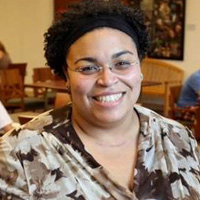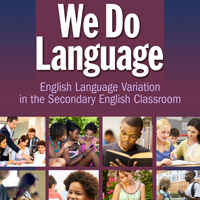Charity Hudley's book explores how to 'do language right'
{{youtube:medium|EMuAJaNM7Xw}}
Anne H. Charity Hudley has spent 11 years bringing her message about linguistic and cultural diversity to teachers involved in kindergarten through 12th grade. Thanks to funding from the National Science Foundation and the State Council of Higher Education in Virginia, she has spent the last four years refining that message and narrowing its recipients to secondary school English teachers.
Her message: Don’t leave a student’s decision whether – and where – to attend college solely to guidance counselors, parents, after-school programs and coaches. They’re your students. Incorporate the college decision into your curriculum.
Charity Hudley, associate professor of education, English, linguistics and Africana Studies, and the inaugural professor of community studies at William & Mary, has put the findings of her research for assisting the process into two books, the second of which was released on Nov. 30.
We Do Language: English Language Variation in the Secondary English Classroom was co-authored by Christine Mallinson, an associate professor at the University of Maryland-Baltimore County (UMBC).
“I hope it will bring this notion about thinking about language and culture from a general conversation into a skillset,” Charity Hudley said. “Educators will be able to see how teachers in classrooms have been grappling with tough topics, thinking of how to talk about sensitive issues that are raised in culture and language differences, both within student population but within literature, and give them some good examples of how to best do that for the students we are teaching today.”
The book examines the complexities of how educators and students communicate with one another, as well as understand what is being communicated by authors whose novels, plays, poems and other texts are commonly read in secondary English classrooms.
It includes concepts, skills, strategies, activities, models and vignettes developed by Charity Hudley and Mallinson, as well as teachers who have been working with them for the last four years, on how to integrate and apply information about English language variation to secondary English classrooms.
For example, there’s an exercise entitled “Linguistic and Literary Autobiographies.” Among the questions teachers can either have students answer in writing or discuss are “Where are you from? Where have you lived? Who have you lived with? Which of these social details do you think have influenced the way you speak now?” “Have you noticed any difference between the way you speak and the way your parents/guardians speak? What did they have to say about your use of language at home?” “Have you ever been praised for your use of standardized English?” “What literature spoke to you as a child?” “What literature speaks to you now and why?” “Do you consider yourself a writer, poet or storyteller?” “In what ways do you engage with literature in everyday settings?”
One exercise a fourth-grade language arts and writing teacher named Jessica Medina developed and shared in the book was to ask students to tell a story to their friends about school uniforms and how they felt about them. Medina noted that students spoke freely and passionately to their friends. But the next day, when parent volunteers came in and served as “president” and “principal,” the students re-told their stories in a totally different style.
The exercise helped students become aware of their linguistic behaviors, and how they changed language and body language, depending on the audience.
“When (language) is done right, we are truly multi-lingual,” Charity Hudley said. “We can feel comfortable and speak across languages. Students feel like they’re competent in more than one language and also within their language and different ways of speaking. They’re comfortable in different contexts, from when they’re in the classroom, to when they’re with their friends, to speaking to people from different ethnicities and backgrounds.”
Chapter five focuses on the transition to college and beyond. The book quotes an unnamed secondary English teacher discussing “the disconnect between high school and college – in other words, how our students are not prepared for the level of critical thinking and rigor involved at the college level.”
Mallinson offers some ways for teachers that get students accustomed to what they will encounter at the university level: Use honorifics at the start of all communication. Marie Jones is “Dr. Jones,” not “Marie” or even “Dr. Marie.” Always use complete sentences. Avoid all abbreviations other than honorifics. Always give complete information to the other person, including context and background, and always express gratitude at the end of every correspondence, even those that are tense or confrontational.
To help students see the value of their words, to consider their words critically and to reflect on the differences between speaking and writing, the book suggests having them use podcasts. To help teach them poetic form, use Twitter and texting.
Virginia Standards of Learning (SOL), Charity Hudley said, are a way to start a conversation about what a student needs to know before being ready for college and have a career, “but if we as faculty at a university don’t know what’s on the SOL, don’t have a lot of individual say or input, then it’s going to be a challenge. We don’t teach on the SOL model when students come to college. There’s a big gap between a student who expects to come and take tests and do well in a SOL model and that first day of college when you meet a professor who’s never seen an SOL in their life."
The question then becomes how to set standards that better reflect the needs of K-12 teachers, but also college professors.
“We don’t have to be in conflict when we think of our role as educators,” Charity Hudley said. “The notion becomes ‘I am not only an English educator but a language educator, and I’m going to teach you the text you have to know, the skills you have to know, but also teach you to love language more generally.’”















